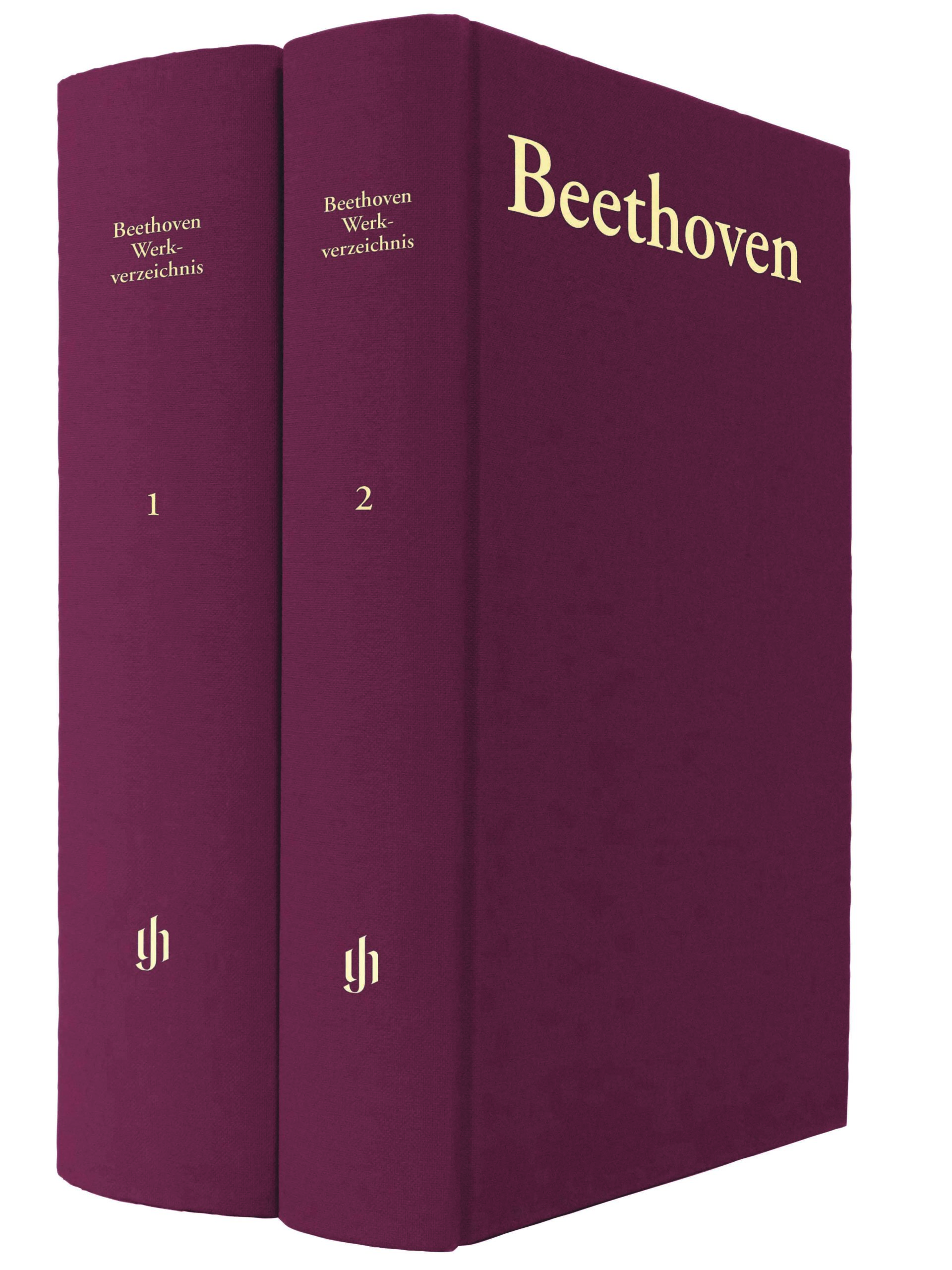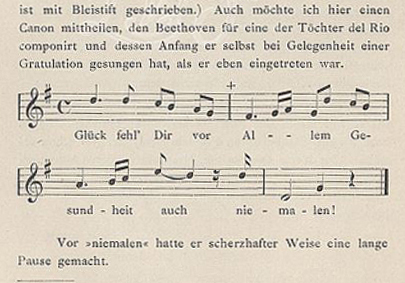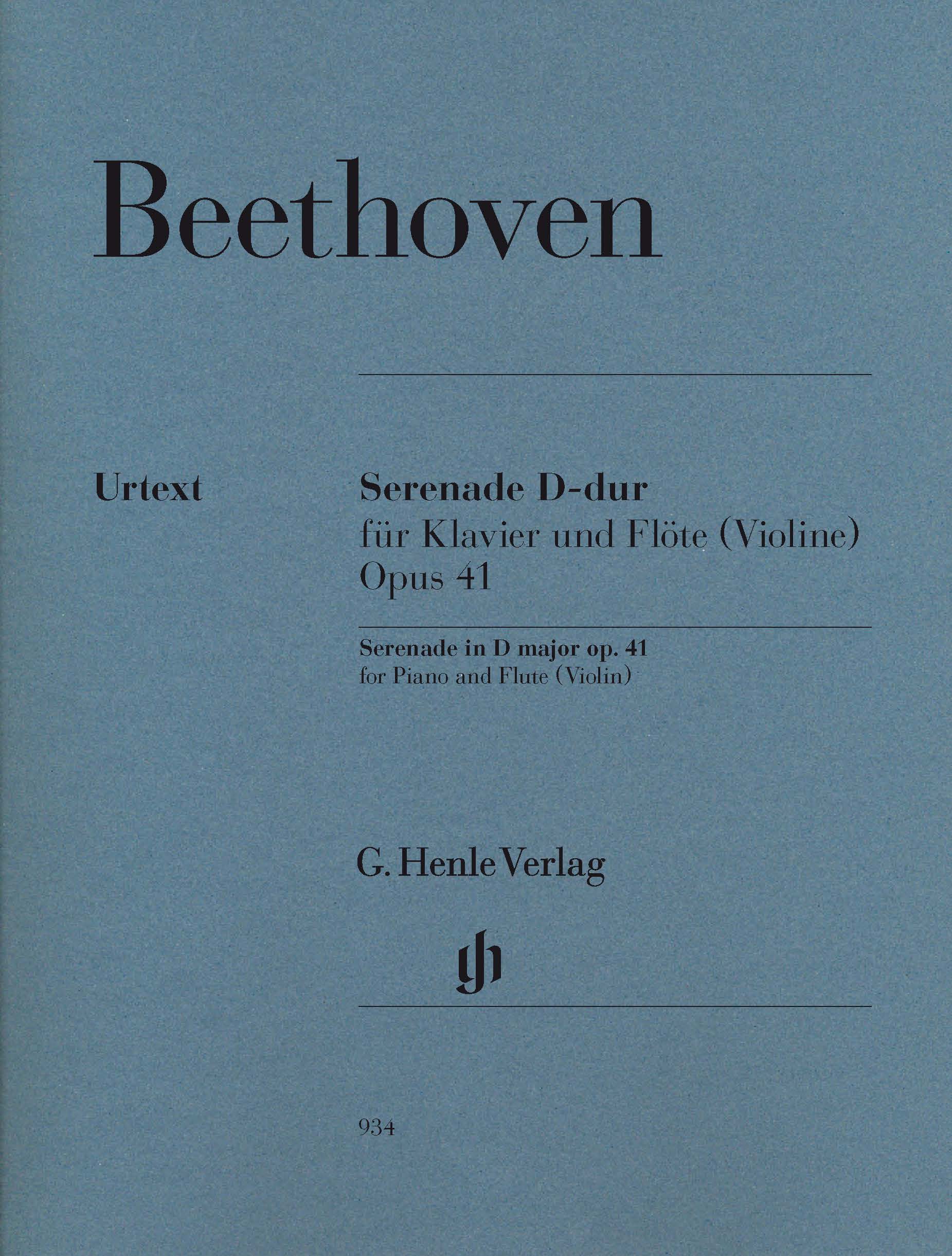 The Beethoven Year is slowly coming to a close, almost everything has already been discussed on our editors’ blog, from Beethoven in films to his discovery of the trombone for the symphony. What hasn’t the man created, renewed, inspired…. High time for the question: Is everything attributed to Beethoven really genuinely Beethoven? Or more professionally formulated: Where are there doubts about the authenticity of works handed down under his name and how do we deal with these today?
The Beethoven Year is slowly coming to a close, almost everything has already been discussed on our editors’ blog, from Beethoven in films to his discovery of the trombone for the symphony. What hasn’t the man created, renewed, inspired…. High time for the question: Is everything attributed to Beethoven really genuinely Beethoven? Or more professionally formulated: Where are there doubts about the authenticity of works handed down under his name and how do we deal with these today?
Information about this can be found in the appendix to the new Beethoven works’ catalogue under the heading “Unechte und zweifelhafte Werke” [Spurious and Doubtful Works], though the section of scarcely 50 pages does not by any means list all such compositions known today. Since a composer’s popularity also increases the number of incorrect attributions and obvious fakes, this would lead in the case of Beethoven to a disproportionate host of entries – and unjustifiably draw attention in his works’ catalogue to items that simply did not come from him.
 The authors of the new works’ catalogue, Dorfmüller, Gertsch and Ronge, therefore deliberately limited themselves to those works already previously listed and accordingly canonised in the predecessor Kinsky-Halm Beethoven catalogue as “Doubtful and Spurious Works” numbering 1–18 in its appendix or to other entries of works no longer meanwhile regarded as “genuinely” by Ludwig van Beethoven. For research, not least owing to the preparation of the new Complete Beethoven Edition, has brought much to light here in the 80 years separating the old from the new works’ catalogue.
The authors of the new works’ catalogue, Dorfmüller, Gertsch and Ronge, therefore deliberately limited themselves to those works already previously listed and accordingly canonised in the predecessor Kinsky-Halm Beethoven catalogue as “Doubtful and Spurious Works” numbering 1–18 in its appendix or to other entries of works no longer meanwhile regarded as “genuinely” by Ludwig van Beethoven. For research, not least owing to the preparation of the new Complete Beethoven Edition, has brought much to light here in the 80 years separating the old from the new works’ catalogue.
In 1978, through meticulous manuscript comparisons, the Beethoven researcher Shin Augustinus Kojima succeeded in identifying several works listed by Kinsky-Halm, as creations by Beethoven’s younger brother Kaspar Karl (1774–1815), who had had from 1794 so little succes at composing in Vienna that in 1800 he switched to the more reliable career as tax official. His D-major Piano Trio (Appendix 3) and a Piano Rondo in B-flat major (Appendix 6), both listed by Kinsky-Halm, are extant in a larger manuscript in the British Library, which had been inaccurately evaluated as an autograph by the young Ludwig because the handwriting was recognised as identical to that of another manuscript located there containing the Menuett WoO 12, no. 1.

Piano Trio by Kaspar Karl van Beethoven, formerly attributed to Ludwig van Beethoven (Anh. 3). Manuscript in the British Library.
So far so good. Only we know today that this Menuett does not come from Ludwig, but from Kaspar Karl van Beethoven, and even that all 12 Menuette WoO 12 can be ascribed to him. That their true authorship remained for so long unknown is probably owing to a deliberate falsification, for in a complete set of parts for these dances, extant in Vienna, “Carlo” was obviously deleted and replaced by “Luigi”.
In the new works’ catalogue, the Menuette WoO 12 were thus shifted from the main section to the appendix of “Spurious and Doubtful Works” that now contains three genuine compositions by Kaspar Karl – inviting, as it were, the discovery of Ludwig’s little brother.…
But well-known composers also show up here. For example, Michael Haydn’s authorship of the joke canon “Glück fehl’ dir vor allem” is meantime amply assured. The work has gone down in music history as a birthday greeting from Beethoven to Anna Giannattasio del Rio, whose daughter reported by letter to the Beethoven biographer Alexander Thayer in 1881: “Finally, I shall write down a canon of Beethoven’s that my mother taught me to sing already as a child. That is, he once came to my mother and began singing, as follows: ‘You are out of luck, above all, health, too’ – he sang to her, then remained silent and laughed. When mother said that it was just not a nice wish, that her fortune and health should fail, he sang the end with the word ‘never’ on a long, sustained tone. The canon’s music, written out, is enclosed here.”

WoO 171 in Theodor Frimmel, Neue Beethoveniana. Illustration with kind permission from the Beethoven-Haus Bonn.
In 1888 Theodor von Frimmel reproduced the canon in his “Neue Beethoveniana”, then as “Beethoven’s composition”, Kinsky-Halm listed it as WoO 171 and the pleasant anecdote has ever since been readily cited time and again in Beethoven literature…. Only a century later the Michael Haydn research revealed that the canon had been printed under Haydn’s name before 1800 and mentioned in a list of his works in 1814 – therefore, Beethoven was here by no means its composer, but only its performer.
So, perhaps it’s not surprising that amongst many other musical trifles besides WoO 171 from the sphere of WoOs, bogus works are to be discovered – such as the “Mälzel-Kanon” WoO 162, which has now been exposed as a tangible forgery. But would you have thought that opera printed during Beethoven’s lifetime would be of doubtful authenticity? Doesn’t an opus number guarantee authenticity? Not necessarily, for the publisher (and not the composer) could then also be responsible for assigning the opus numbers – and the qustion of authenticity is sometimes not at all so easy to decide….
Thus, in the winter of 1803/04, Hoffmeister & Kühnel published in Leipzig two arrangements of Beethoven’s works whose opus numbers are to be treated with caution: the Serenade for piano and flute op. 41, which is still popular with flutists today, going back to Beethoven’s Serenade op. 25 for the unusual scoring of flute, violin and viola, and the Notturno for piano and viola op. 42, based on his Serenade for string trio op. 8 (see also the blog post on “Beethoven and the viola“). Beethoven sold the publishing house these arrangements, but expressly emphasised in his letter of 20 September 1803: “The transcriptions are not mine, but they have been reviewed by me and have been completely improved in places, so don’t come to me writing that I’ve transcribed them, because otherwise you’re lying, and I wouldn’t even have found the time and patience to do it.” (Beethoven Briefwechsel Gesamtausgabe, No. 157).

First edition of Ludwig van Beethoven, Serenade for piano and flute op. 41. Illustration with kind permission from the Beethoven-Haus Bonn.
The author of these transcriptions was most likely Franz Xaver Kleinheinz (1765–1832), a composer acquainted with Beethoven, who according to Beethoven’s brother Kaspar Karl, had “arranged some instrumental music for piano and accompaniment under the supervision of my brother” (Beethoven Briefwechsel Gesamtausgabe, No. 138). Although Ludwig had apparently monitored and improved the arrangements, he did not want to be named as their author. The publisher, in turn, had little interest in not naming Beethoven – and found a solution genuinely ingenious in its ambiguity on the title page of opus 41, stating it as “Serenade pour le Fortepiano et Flûte (ou Violon) par Louis van Beethoven”, and adding in two lines, “Arrangée d’une Sérenade pour Flute, Violon et Alto, / et revûe par l’Auteur”, allowing the possible, though not necessarily correct conclusion that not only the reviewing but also the arranging was done by Beethoven. And the publisher was not wrong in his hunch, for stated so beautifully at the opening of a short review of opus 41 in the Zeitung für die elegante Welt is: “Beethoven’s name already recommends this very lovely serenade” – which would certainly have been less the case for Kleinheinz.
If both opera are no longer to be found in the main body of the new works’ catalogue – as is the case with Kinsky-Halm – but have been shifted into the appendix, this does not express a new state of research, for the relevant letters and references to Kleinheinz as a possible arranger can already also be found in Kinsky-Halm. Reflected here is an altered awareness of the “rank” of an arrangement by someone other than the composer and a certain respect for Beethoven’s categorical distinction between his own arrangements of his own works for which he provided his own opus number (such as exists in his arrangement of the early Wind octet op. 103 for string quintet as op. 4 ) and those arranged by someone else.
 But what does the responsible editor of an Urtext edition do now with these works? Shouldn’t the Henle edition of opus 41 state “Kleinheinz” instead of “Beethoven”? Or at least “Beethoven · Kleinheinz” analogous to Henle editions of Busoni’s Bach arrangements or Franz Liszt’s Schumann transcriptions? Since Kleinheinz’s authorship is probable, but not certain, this naming of names is, of course, prohibited from the outset. Opus number 41 is, furthermore, indeed related to Beethoven’s oeuvre. So Beethoven remains alone on the cover – even though in this case it is not just Beethoven within. But this is explained in all necessary detail, of course, in the preface by the editor Egon Voss.
But what does the responsible editor of an Urtext edition do now with these works? Shouldn’t the Henle edition of opus 41 state “Kleinheinz” instead of “Beethoven”? Or at least “Beethoven · Kleinheinz” analogous to Henle editions of Busoni’s Bach arrangements or Franz Liszt’s Schumann transcriptions? Since Kleinheinz’s authorship is probable, but not certain, this naming of names is, of course, prohibited from the outset. Opus number 41 is, furthermore, indeed related to Beethoven’s oeuvre. So Beethoven remains alone on the cover – even though in this case it is not just Beethoven within. But this is explained in all necessary detail, of course, in the preface by the editor Egon Voss.


